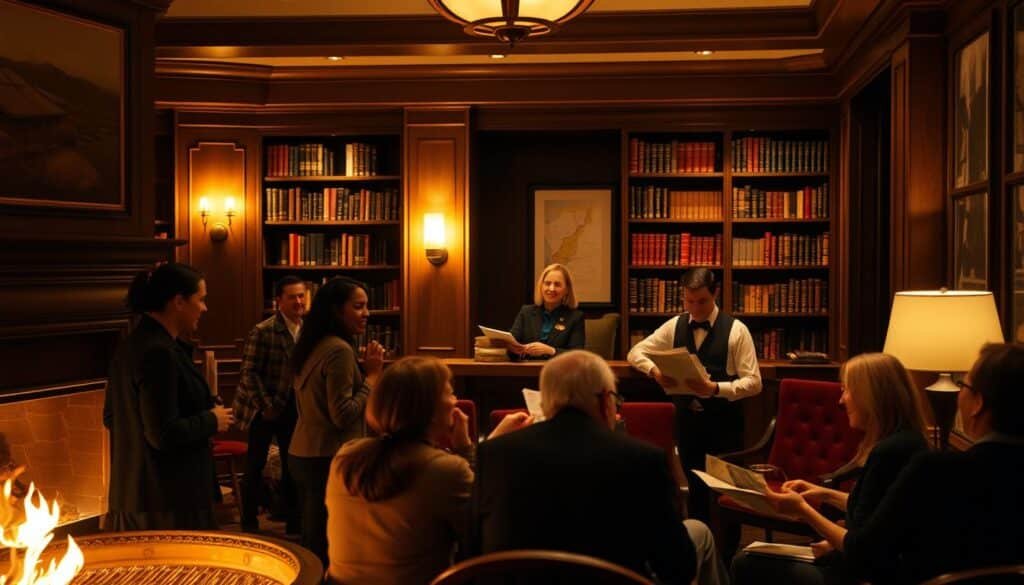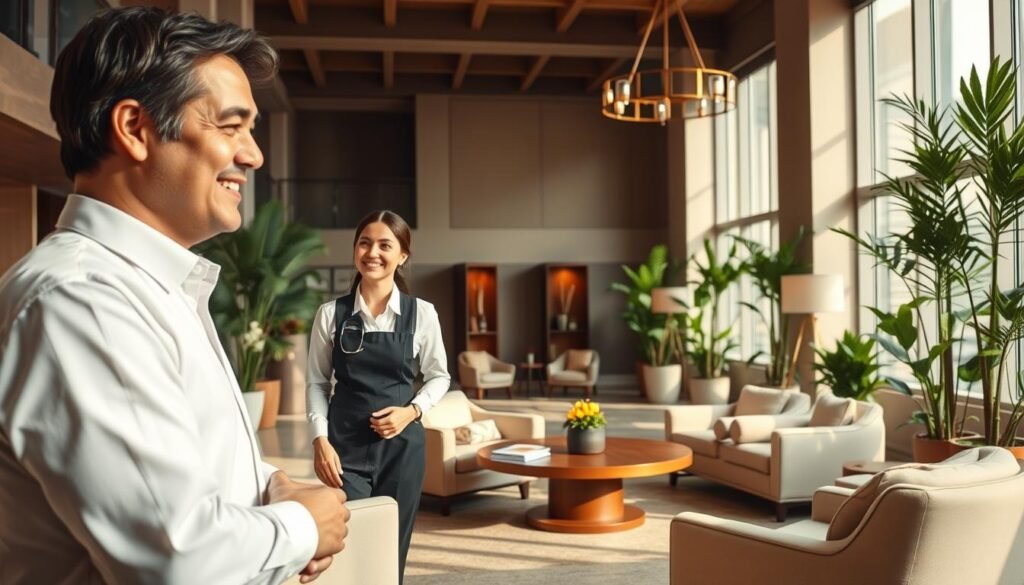HOME / SINGLE POST

Surprising fact: laughter boosts attention across cultures and can make groups listen up to 40% longer than a dry briefing.
We write from the heart of UK hospitality, where a light touch helps guests relax while teams keep standards high. We believe small moments— a warm smile, a tidy direction, a quick line—shape how guests feel on arrival.
Front-of-house staff and tour guides juggle commentary, group handling and time checks. They use safe, inclusive humour tools—storytelling, misdirection, the rule of three and self-deprecation—to lift experiences without risking comfort.
In this blog we outline shifting expectations in the hospitality industry and share practical tips you can use at a hotel reception or on a local tour. Our aim is simple: help people enjoy themselves while operations run smoothly.
Today’s UK hotels and tour operators must do more than deliver tasks; they must create moments that matter.
We see a clear shift: guests want meaningful experiences, not just efficient service. The wellness economy reached $5.6 trillion in 2023 and is rising fast. Younger travellers spend more on health and wellbeing, and that affects how people choose where to stay.
The hospitality industry now links affective pleasure and cognitive growth. When guests learn, relax or connect, they are more likely to return and recommend us. That makes small acts of care — remembering a name, sharing a local tip, a well-timed smile — part of the memory they take home.
We must align brand promise with on-the-floor behaviour. Short pre-shift huddles help teams plan where a warm line will lift a moment and where polished service must keep time and safety. In this setting, humour anchors to professionalism so guests feel welcome, while every service step stays on schedule.

Quick, well-told stories turn routine briefings into moments people remember. They give rhythm to a short talk and make a single line land.
We teach a simple structure: start with a truthful pain point, then use the rule of three to add a gentle twist. Keep punchlines short so guests smile and the line stays in their heads.
In the first minutes we watch body language, cultural mix and energy. That quick assessment helps us tune delivery so everyone gets the right line at the right time.
We favour self-deprecation, soft misdirection and clean language. This keeps the focus on us, not on a guest, so guests feel comfortable and included in the setting.
Light improvisation invites a short response, then we return to the plan. Practical tools help: a pocket setlist of micro-bits, clear wayfinding, time checks and calm management so service stays on track.

Designing stays that lift mood and calm the mind starts with small, deliberate touches. We blend quick sensory lifts and deeper programmes so a stay feels both easy and meaningful.
We layer immersive moments—gentle entertainment, spa and beauty options, and considered décor—to create a warm sense of place. The wellness economy was $5.6 trillion in 2023 and is set to grow, so these touches matter to guests.
Near‑by walks, local craft sessions and unhurried itineraries let people take their time. These simple outdoors options calm minds and deepen delight without heavy cost.
Guided history walks, tasting classes, yoga and beginner adventure tasters help guests grow. Mixing learning and leisure improves satisfaction and repeat visits.
Shared tables, small group activities and cultural exchanges build easy connections. We recommend small packages—mini retreats, story‑stops on local trails, early‑evening tastings—that any hotel team can run.
People make service feel genuine; hiring and training must aim for warm skill and steady calm.
We look for core traits that predict success in hospitality: detail-focused, tenacious, caring and variety-seeking. Teamwork traits — authority, friendship and a healthy competitive drive — also help at peak time.
Caring, approachable, adaptable, calm, resilient, humorous. These qualities keep interactions natural and attentive in any hotel setting.
We use hospitality-focused personality questionnaires, numerical and verbal ability tests, and situational judgement tasks. These tools embed role responsibilities and brand values into selection.
Training targets are simple and practical: checklist discipline for detail focus, listening drills for needs discovery, and stress management for steady leadership.
“Small recognitions and steady coaching grow skills faster than one-off courses.”
| Assessment | What it shows | Practical use | Outcome |
|---|---|---|---|
| Personality questionnaire | Customer orientation, resilience | Shortlist aligned candidates | Better cultural fit |
| Ability tests | Numerical & verbal fluency | Role matching (reception, ops) | Faster training time |
| Situational judgement | Decision style under pressure | Scenario-based interview | More reliable on-shift choices |
| Observation & feedback | Real behaviour on the floor | Coaching and recognition | Improved service consistency |
Development paths include refresher modules, observed shifts with feedback and small awards. These keep skills current and strengthen connections across the industry.
When teams blend warmth and sharp operations, even a busy shift can feel calm and generous.
We build a culture where a kind word and a confident smile sit beside tight procedures. That balance helps hospitality thrive and lifts the overall experience for every guest.
Use humour sparingly and with care so guests feel welcome. Pair that warmth with clear routines so promises are kept across the stay.
Design offers that boost mood and learning — spa moments, local walks, short classes — to make stays richer and to grow loyalty and recommendations.
Hire for attitude, train for craft, and pilot one small change this week — a quick story at check-in or a slow‑tour micro‑itinerary — then note how guests feel.
We’ll keep sharing practical tips on this blog to help UK teams turn small touches into memorable experiences.
Never miss any important news. Subscribe to our newsletter.